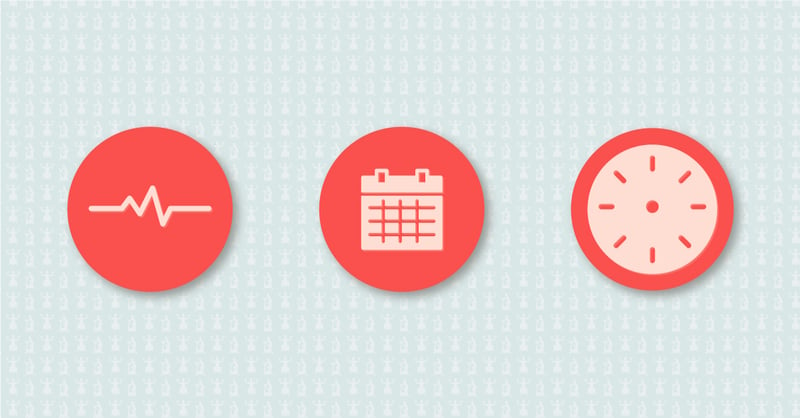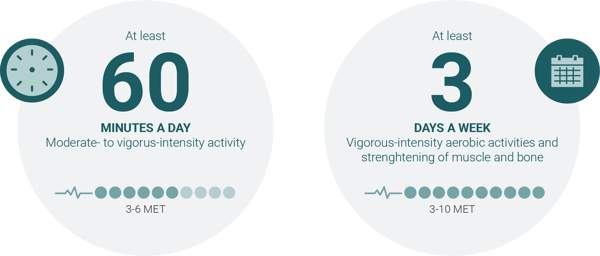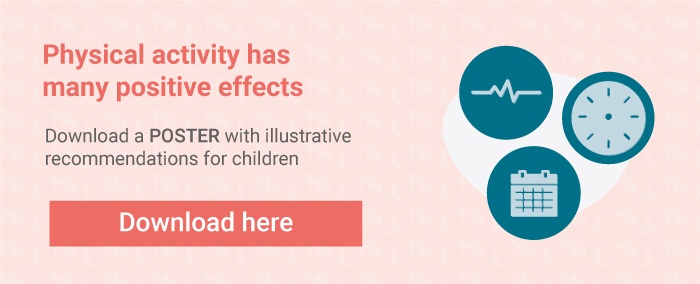Why and how should people with CP stay physically active?


Attitudes towards physical activity and establishing good habits are formed at an early age and can set the stage for a child’s health later in life. Therefore, encouraging an active lifestyle early is key. Especially for children with a disability.
In this article we will highlight:
- Benefits of physical activity
- Are the benefits of physical activity the same for people with CP?
- Physical activity versus inactivity within the CP population
- Physical activity recommendations for people with a disability
- Types of activities
- When to start with physical activities
Participation in all types of physical activity drops dramatically as children age, and if your child have cerebral palsy, the likelihood of developing a sedentary lifestyle increases. Here is some information to help you keep your child healthy an active.
Benefits of physical activity
For every human regular physical activity is important to improve overall health and fitness and prevent:
- Heart diseases
- Stroke
- Diabetes
- Several cancer types
- Hypertension
In addition, research has proven that physical activity helps maintain healthy weight, strengthens muscles and bone, improves your ability to do daily activities, improves mental health as well as quality of life and well-being.
Everyone can experience the health benefits of physical activity no matter age, shape, size or motor abilities.
Physical activity
Is any bodily movement produced by skeletal muscles that requires energy expenditure and can be performed at a variety of intensities, as part of work, domestic chores, transportation or during leisure time, or when participating in exercise or sports activities. *
Physical inactivity
Is defined as not meeting the 2010 Global recommendations on physical activity for health. *
*Ref. WHO 2020
A recent report from World Health Organisation (WHO 2020) estimates that 28% of adults (above 18 years of age) and 81% of adolescents (age 11-17 years) are not meeting the 2010 Global recommendations on physical activity. It is also known that physical activity already decreases from the age of 6.
Are the benefits of physical activity the same for people with CP?
Yes, research indicates that the outcomes of physical activity are the same for people with a disability such as CP as for able-bodied people.
People with CP is a vulnerable group when it comes to risk of aging prematurely and might experience negative health outcomes early in life compared to typically developing people due to the extra stress and strain on the body the disease causes (i.e., spasticity, reduced muscle strength, pain, deformities).
This knowledge indicates that the need of staying physically active through life, from childhood into adulthood, is extremely important to prevent both secondary outcomes related to the CP diagnose, but also to improve overall health.
Physical activity versus inactivity within the CP population
The last 10-15 years there has been an explosion in research about physical activity and inactivity in people with CP. The literature emphasises that children, adolescents, and adults with CP are less physically active than typically developed people. It has been highlighted that people with CP are being sedentary up to 76-99% of waking hours.
It is also pointed out that participation in and frequency of physical activity is closely related to gross motor function. The higher GMFCS (Gross Motor Function Classification System) level, the lower participation in physical activity. For example, children with GMFCS level of I–III participate in more varied forms of physical activity, while children with a GMFCS level of IV–V mainly participate in swimming and horseback riding.
The consequences of inactivity are reduced cardiorespiratory endurance and muscle strength. Because people with CP have lower levels of physical activity than typically developing people, they are at higher risk of developing metabolic and cardiovascular diseases, compared to able-bodied. Recent studies on the adult CP population estimates increased risk of chronic diseases like diabetes, asthma, hypertension, and other cardiovascular conditions.
Read also: I’m not made of porcelain.
Physical activity recommendations
The World Health Organisation has recently updated physical activity recommendations for people with a disability. The recommendations are divided into two age groups.
Aged 5-17 years
It is recommended that children and adolescents should do at least 60 minutes per day of moderate- to vigorous-intensity activity. This activity should mainly contain aerobic physical activity.
In addition, at least 3 days a week, vigorous-intensity aerobic activities should be done, as well as those that strengthen muscles and bone.
The recommendations also emphasise the importances of reducing sedentary behavior by sitting less and moving more! Doing some physical activity is better than doing none. 
Aged 18 years and older
It is recommended that people aged 18 years and older should do at least 150-300 minutes of moderate-intensity aerobic physical activity weekly OR 75-150 minutes with vigorous-intensity aerobic physical activity weekly.
In addition, muscles strengthening activities at moderate-to-vigorous-intensity should be done at least twice a week.

Again, it is recommended to reduce sedentary time by replacing it with physical activity of any intensity, and remember that doing some physical activity is better than doing none.
Definitions
Aerobic physical activity = activity in which the body’s large muscles move in a rhythmic manner for a sustained period of time. Aerobic activity = endurance activity that improves cardiorespiratory fitness.
Light-intensity physical activity = physical activity level is between 1.5 and 3 METs, meaning activities with energy cost less than 3 times the energy expenditure at rest for that person. Activities that do not result in a substantial increase in heart rate or breathing rate.
Moderate-intensity physical activity = physical activity level is between 3 and 6 METs, meaning activities performed between 3 and less than 6 times the intensity of rest.
Vigorous-intensity physical activity = physical activity level is above 6 METs and require the highest amount of oxygen consumption to complete the activity.
Types of activities
All people need to be physically active to maintain good health, but if your child has a disability, she or he might need support or assistive devices to be able to perform physical activity.
Examples of activities for people with moderate to severe disabilities:
- Wheelchair race
- Wheelchair basket
- Wheelchair dance
- Climbing
- Swimming/pool activities
- Horseback riding
- Racerunning
- Walking in a walker (example NF-Walker)
- Leg cycling (stationary device)
- Bicycling
- Weight training (home or at a gym)
- Exercise bands
- Activity in an Innowalk
Read also: All for Ella – and an independent life despite of her CP
It is important to remember that small interruptions of sedentary behaviour are important during the day, and some activity is better than no activity. So, involving your child in activities like transfer, sitting with less support on a bench, some self-initiated movement on the floor are all exercising. Is the child able to participate in bicycling, what about a ride in the afternoon!
Examples of activities for people with light to moderate disabilities:
- Climbing
- Swimming/pool activities
- Horseback riding
- Walking stairs
- Walking in the woods
- Jogging
- Rowing
- Weight training
- Exercise bands
- Soccer
- Baseball
Be aware that people with light to moderate disabilities might also need some modifications of rules, surroundings or assistive devices to master the activity. Especially when getting older where the individual might experience fatigue, reduced muscle strength and/or decreased endurance, among others.
Read also: Interview with Katarina Lauruschkus: Physical activity for everyone
When to start?
If parents are physically active in everyday life, it is more likely that their children will also be physically active. Attitudes and habits are formed at an early age and can set the stage for the child’s health in later life. Therefore, promoting an active lifestyle early is key. However, it is not just about activity, but also minimizing sedentary behaviour. A small shift in behaviour, for example one hour of sedentary behaviour replaced with one hour physical activity, could have a significant long-term impact on a child’s health trajectory.
Download our poster with recommendations for children:
Download our poster with recommendations for adults:

Rikke Damkjær Moen brings many years of experience as clinical physiotherapist to the Made for Movement team. Her mission is to ensure that everybody, regardless of mobility problems, should be able to experience the joy and health benefits of physical activity. As our Medical Manager, Rikke is passionate about sharing knowledge so that individuals with special needs, families, and clinicians can discover the possibilities and solutions provided by Made for Movement.
A severe accident during a hockey game resulted in 35-year-old Tobias breaking his neck and becoming paralysed from the armpits down....
In this blog, we take you on a deep dive into universal design so you can understand and recognize how these principles are...
A disability entails the loss of, damage to, or deviation from bodily or psychological functions, in the form of mental, physical,...
Hear from us from time to time and learn new things

